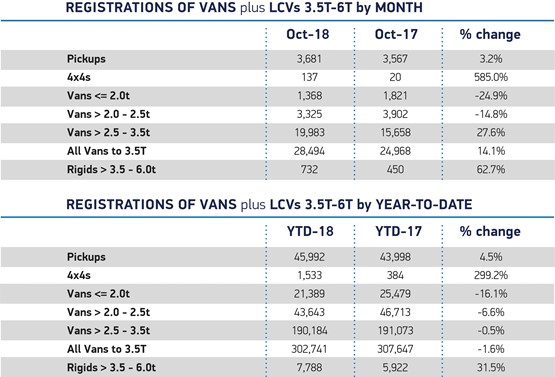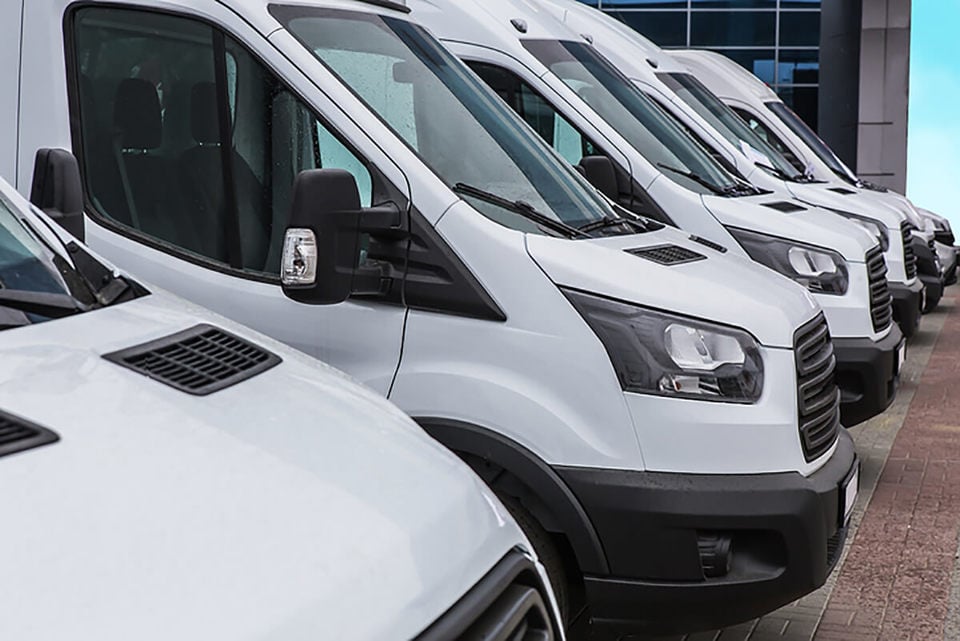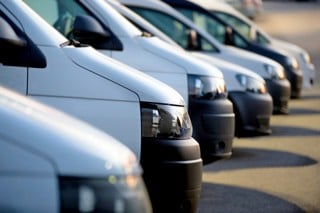Demand for new light commercial vehicles (LCVs) increased in October, according to the latest figures released today by the Society of Motor Manufacturers and Traders (SMMT).
More than 28,000 vans and pick-ups joined British roads in the month, representing a 14.1% increase in registrations, as demand continued to fluctuate throughout 2018.
Growth was driven by a rise in demand for the popular 2.5-3.5t van, up 27.6% to take a 70.1% share of the market, while demand for pick-ups increased 3.2%.
In contrast, small and medium-sized vehicles both experienced declines, down 24.9% and 14.8% respectively.
The rise follows months of fluctuating registrations caused by variations in fleet buying cycles and business confidence.
Mike Hawes, SMMT chief executive, said: “While it is positive to see a boost for new vans in October, the growth comes on the back of a turbulent 10 months, with ongoing fluctuations in demand.
“Although the sector remains strong, we expect this trend to play out over the remainder of the year, as ongoing political uncertainty affects business confidence and hence operator investment.”
Year-to-date, 302,741 new LCVs have been registered, representing a drop of 1.6% on the first 10 months of 2017, and in line with current forecasts. However, demand remains at a high level, up a third (33%) on the same period in 2013.
Russell Adams, commercial vehicle manager at Lex Autolease: said: “New commercial vehicles remain an essential requirement for fleet operators. The cost of having a van off the road is a minimum of £500 a day, meaning that maintaining older vehicles often becomes a false economy. The increase in year on year van registrations in October is testament to that fact.
“Businesses are considering how best to reduce their emissions, whether by upgrading to the latest Euro 6 diesel engines for high mileage users or investigating how electric vehicles can support different job roles”
Adams said that two-thirds (65%) of his conversations with operators are now focused on how and when they can incorporate electric vehicles into their fleets.


























Login to comment
Comments
No comments have been made yet.